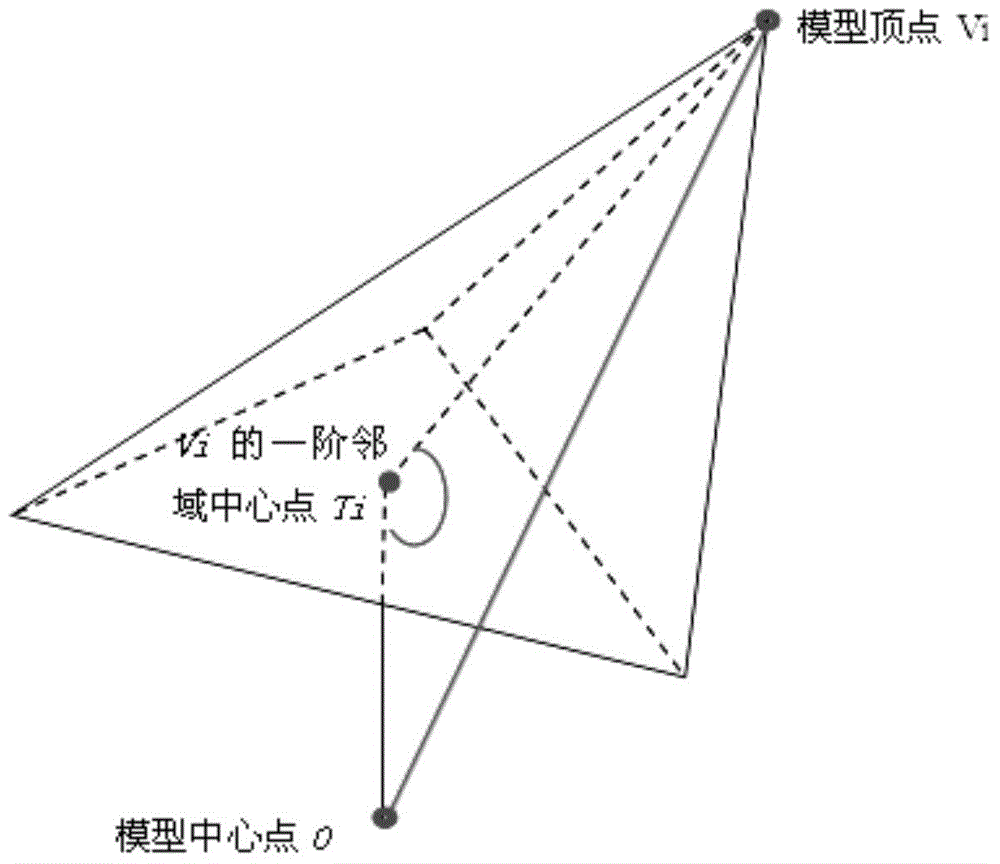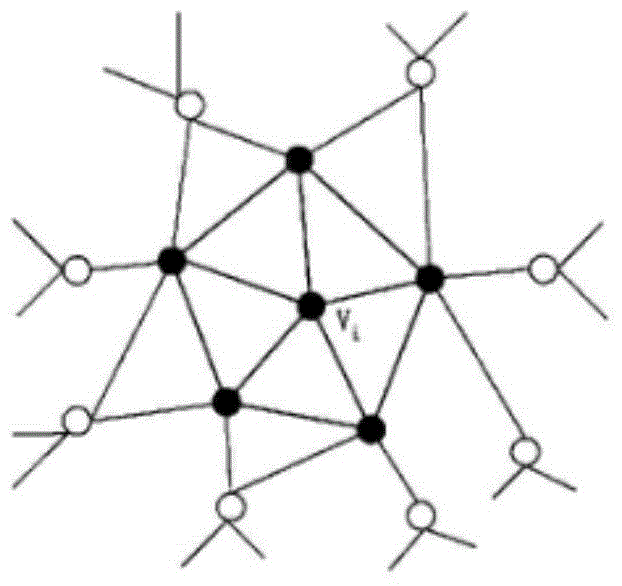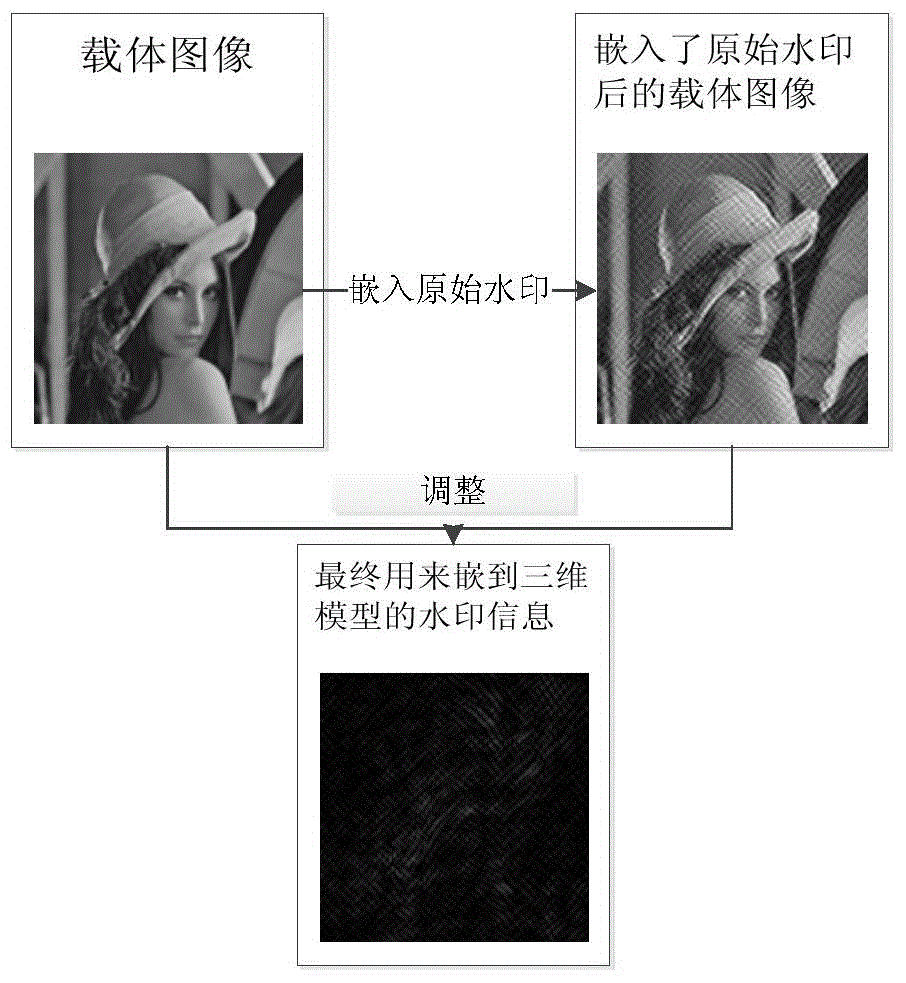Three-dimensional mesh model blind watermarking method based on image discrete cosine transformation
A discrete cosine transform, three-dimensional grid technology, applied in image data processing, image data processing, instruments, etc., can solve problems such as attribute loss, complex attack method embedding and extraction of watermarks, and non-unique representation methods. Effect
- Summary
- Abstract
- Description
- Claims
- Application Information
AI Technical Summary
Problems solved by technology
Method used
Image
Examples
Embodiment Construction
[0043] The present invention will be further described below in conjunction with accompanying drawing.
[0044] like figure 1 , figure 2 and image 3 As shown, the 3D mesh model blind watermarking method based on image discrete cosine transform specifically includes the following steps:
[0045] Step 1. Select the following two features for each vertex of the 3D model:
[0046] Feature 1: Model Vertex V i Distance S to model center point O i ;
[0047] Feature 2: The angle θ between two connecting lines i , and the two connecting lines are the model vertices V i and its first-order neighborhood center point T i The connecting line, the center point T of the first-order domain i The connection line with the center point O of the model;
[0048] Determine a unique sorting sequence for all vertices of the 3D model through feature 1 and feature 2;
[0049] Step 2. Select the first M×M vertices of the sorted vertex sequence, and obtain the texture coordinates of the fir...
PUM
 Login to View More
Login to View More Abstract
Description
Claims
Application Information
 Login to View More
Login to View More - R&D
- Intellectual Property
- Life Sciences
- Materials
- Tech Scout
- Unparalleled Data Quality
- Higher Quality Content
- 60% Fewer Hallucinations
Browse by: Latest US Patents, China's latest patents, Technical Efficacy Thesaurus, Application Domain, Technology Topic, Popular Technical Reports.
© 2025 PatSnap. All rights reserved.Legal|Privacy policy|Modern Slavery Act Transparency Statement|Sitemap|About US| Contact US: help@patsnap.com



